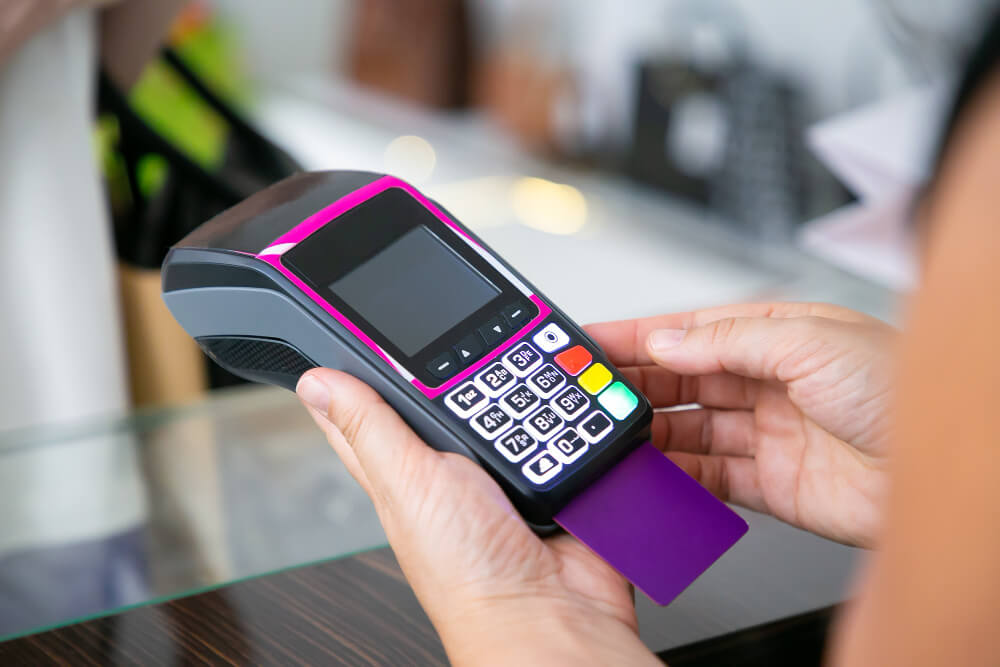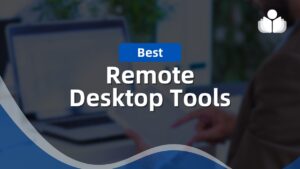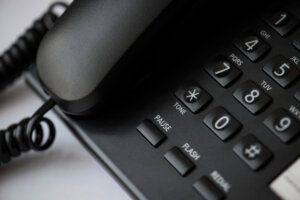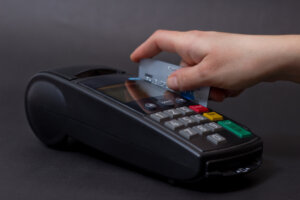Keeping accurate real-time sales records, managing inventory, and tracking customer information can be difficult when you’re processing transactions manually. Fortunately, you can use a POS system to streamline these tasks and gather important sales data.
What is a POS system, and why do most small businesses have one in place? A point of sale system includes hardware and software that business owners and staff use to process transactions and payments at checkout. After a customer selects a product in a store or receives a service, they need to pay for it, and this is where a POS system comes in.
How Does a POS System Work?
A POS system records product details of the purchased item, tracks its details, and provides order feedback. This feedback is typically in the form of the total cost of the order to the customer and sales reports to the store owner.
To serve both customer and owner, a system includes software and different types of hardware to get the job done. These include barcode scanners, cash drawers, and computer monitors.
POS Hardware
For a POS system to work, you’ll need the right software and pieces of hardware at the checkout counter. The point of sale hardware market in the U.S. is projected to be worth $9.54 billion by 2025, indicating an increase in use at retail locations. Common hardware that small businesses use to set up a POS include:
POS Terminal
The primary hardware of a sales POS system is the terminal. The terminal is the device where you install the POS software. It can be a desktop computer, a tablet, or a smartphone. You’ll have to connect all other pieces of hardware to the terminal to complete your POS setup.
Monitor/Display
The monitor shows transaction details when you use the various POS hardware. In most retail stores, the display used is a desktop computer. Many small businesses also use smartphones or tablets.
Barcode Scanner
Retail staff use a barcode scanner to capture details about the product on sale. It reveals the price, special discounts, and tax charges on the product.
Card Reader
Modern POS systems include a card reader that allows customers to make payments using credit or debit cards. Credit card reader providers typically charge a monthly maintenance charge and may also charge per-transaction fees.
To use a card reader as part of your retail POS, you’ll need to connect it with your POS software. When you swipe a card through the reader, the POS terminal transmits the card data for approval. If the customer’s bank approves the transaction, you’ll receive authorization to complete the sale.
Receipt Printer
A receipt printer prints out sale receipts after the transaction is done. A receipt is given to customers as a record of the sale, and it also helps businesses keep track of product performance and inventory levels. Receipts also record details such as sales tax, method of payment, and the time and date of the sale. For some business owners, digital receipts will suffice, so a printer may be unnecessary.
Cash Register
A POS system calculates and registers cash transactions using a cash register. Cash registers are often attached to a cash drawer beneath, used for storing cash from payments. Cash registers aid in inventory management and financial reporting when paired with barcode scanners, card terminals, and receipt printers.
Types of POS Systems
There are several types of retail POS systems, each suitable for various businesses. It’s advisable to familiarize yourself with all types to identify the one that’s right for your small business.
Here are the main types of POS systems:
Server POS System
A server retail POS system is one where the data gathered is stored on-premise at the business. This type typically comes with the highest setup costs and monthly maintenance fees. When you have a traditional server system, you’ll need to be on location to utilize it. To create a server POS system, you’ll need to buy hardware from various providers.
Cloud-Based POS System
With cloud-based systems, sales data is stored on the internet instead of an on-location server. Once you’ve installed your chosen POS software into your hardware, you’ll have access to your data as long as you have an internet connection.
Cloud-based POS software works with physical and online stores, unlike the server system that only serves a physical retail store. With e-commerce sales growing each year, introducing cloud-based POS systems into your business can boost growth significantly.
A good example here is the Clover POS system is a popular cloud-based system that allows businesses to complete transactions online.
Hybrid POS System
A hybrid system incorporates features from both on-premise and cloud-based systems. It’s an ideal option if you’d like to have the best of both sides. Hybrid point of sale systems are good for businesses with both physical and online stores. The Lightspeed POS system is an example of a hybrid system that utilizes both on-location and online features.
Mobile POS System
Mobile POS systems use a device such as an Android tablet or iPad as the point of sale. This system typically involves only two pieces of hardware: a smartphone or tablet and a credit card reader.
You can bring POS mobile devices to your pop-up shops, trade shows, and other events outside your physical store. A mobile sale POS system also comes in handy at physical stores to reduce customer queues and speed up checkout. An example is the Square POS system, which you can use on your mobile device without requiring additional hardware.
Features of a POS System
Most POS systems offer the same basic features, while others, such as restaurant POS systems, include additional specialized tools. The following are the features you’ll find in most POS systems for retail businesses:
- Checkout
- Payment processing
- Inventory management
- Reporting and analytics
- Employee management
- Customer relationship management
- Multichannel sales
Checkout
Checkout tools are the primary basis of a POS system; hence, this is a feature you’ll find on all point of sale systems. With checkout features, you can easily ring up customer purchases to find out their worth.
Payment Processing
Payment processing is another basic feature found on all POS systems. A POS system allows various payment methods, from credit and debit cards to cash.
To use these, you’ll need additional hardware such as a card reader or cash register to process sales. For online ordering, you’ll need POS software that enables digital payments.
Inventory Management
When you ring up a sale, POS software brings up so much more than price information. It also shows crucial information about inventory levels. You can easily tell when a product needs restocking with the inventory management feature.
Reporting and Analytics
Retail point of sale software draws various insights from daily sales data. You can identify products that sell the best, those that take long to clear, and identify intervals with the most sales using POS data. With this data, you can plan everything from restocking to marketing campaigns.
Employee Management
Most POS systems come with an employee management feature to aid staff scheduling and tracking. With this feature, you can track what each staff member is doing at any moment, how many hours they worked, and set permissions for each of them. This feature also helps prevent losses due to staff fraud, such as after-sale transaction modification.
Customer Relationship Management
A customer relationship management (CRM) tool gathers important data about items bought, the amount spent, customer contact information, payment methods, and returns. It gives you important insight on what products a certain customer is interested in, their spending limits, and how often they shop.
With this information, you can create more targeted marketing campaigns that target each customer’s tastes. With the collected data, you can also enroll them in loyalty programs and easily provide solutions in case of return or exchange requests.
You can get more from your POS customer relationship management tool by integrating it with your VoIP caller phone system. This gives staff direct access to customer data when they have queries or complaints. You’ll need the best VoIP app for your business to benefit from this integration.
Multichannel Sales
Does your retail business have multiple locations serving as points of sale? Perhaps you have an online store and also sell in brick-and-mortar stores and mobile locations. A point of sale with a centralized multichannel sales feature consolidates all of your sales data from each POS into one place, making it easy to keep track and gather insights.
How To Choose a POS System for Your Small Business
What type of POS system is convenient for you, and which features does your business need? Asking these questions will help you find the best POS system for your business. Here are factors to keep in mind when choosing a POS system for your small business:
Hardware
Each type of POS system has hardware requirements you must meet to get it working. With an on-premise system, you’ll have to purchase or rent multiple pieces of hardware, including a display, barcode scanner, receipt printer, and card reader. If you want to go with a cloud-based system, you may only need a mobile device and a card reader.
Ease of Use
A good POS system should be easy to use, both for you and for your customers who are checking out by themselves online. An easy-to-use system streamlines checkout activities and saves time for everyone involved.
Features
Besides checkout and payment processing, what other features would you like to have on your point of sale system? Some of the vital features to look out for include inventory management, analytics and reporting, and customer relationship management. With these features, you not only speed up checkout but also keep an eye on your inventory and make informed marketing decisions.
Credit card processing software is also a crucial feature for businesses today. This is due to the rising preference for credit card payments among consumers, which the Federal Reserve reported to total $97.04 trillion in 2019.
Scalability
Choosing a point of sale system that will scale with your business is advisable. Otherwise, if your system is unable to keep up with a growing business, you might end up losing customers due to an unsatisfactory shopping experience.
For example, you might not be able to take payments quickly at checkout leading to long queues in your store. It might also be difficult to keep track of all your customers. This means that loyalty programs might be difficult to implement.
As your business grows, you’ll need more elaborate and specialized features to make the most of your POS data. If your system cannot keep up, it’ll be challenging to get the insights you need to improve or plan your business operations. Opt for a system that scales with your business to avoid hiccups and save you from spending money on new hardware or software each time your needs change.
Reviews
Before purchasing a POS system, check what other business owners say about it. Reviews will give you a good idea of how the system works and performs.
Note that what works for one store won’t necessarily suit you because the type of business determines the ideal software. For instance, if you own a restaurant, you’ll be better off checking reviews for the best restaurant POS systems rather than checking feedback from general retail store owners.
Customer Support
It’s wise to choose a POS system from a provider with good customer support. In case you run into any problems with your system during business hours, you should be able to reach them instantly for assistance. This will prevent delays caused by a problematic system.
Benefits of a POS System
The right POS system can bring several benefits to your business. These include:
- Time savings
- Improved customer experience
- Important insights
- Increased accuracy
- Multiple payment methods
Time Savings
A point of sale system saves a lot of time during the checkout process. You can check product details within moments, process payments, and gather important customer information. This takes a much shorter time than if you were checking products manually.
Improved Customer Experience
Thanks to cloud-based POS systems, customers can shop from an online store without requiring assistance from an in-store employee. They can also purchase items on the go without joining long checkout queues.
Important Insights
Using a POS system leaves you with a lot of useful data you can use in marketing, inventory planning, and goal setting. Features such as inventory management allow you to see your best-selling products and the customers buying them.
Over time, you’ll be able to identify periods when you should stock up more or switch more attention to other products based on seasonal trends.
Increased Accuracy
There’s much less room for errors when using POS software to ring up sales than when doing it manually. This accuracy also extends to when you have to collect and merge data from multiple points of sale. With the software doing the heavy lifting, your reports are guaranteed to be accurate and well-organized.
Multiple Payment Methods
Nowadays, it’s important to give your customers a wide array of payment methods to choose from. Gone are the days when most sales were completed with cash transactions. Today, the most common in-store payment method in the U.S. is credit cards, followed by debit cards. Cash comes third in popularity, followed by digital wallets. Go for a POS system that allows you to integrate all popular payment options into your business.
Frequently Asked Questions (FAQs) for What Is a POS System
Here are answers to frequently asked questions about POS systems.
Conclusion: So What Is a POS System?
To find the best POS solutions for your store, always begin with your business needs in mind. Your needs will dictate which POS features are vital for you, after which you can look for POS system providers offering what you need.
Remember to choose a system that will scale with your business for maximum value.
 Sections of this topic
Sections of this topic
















